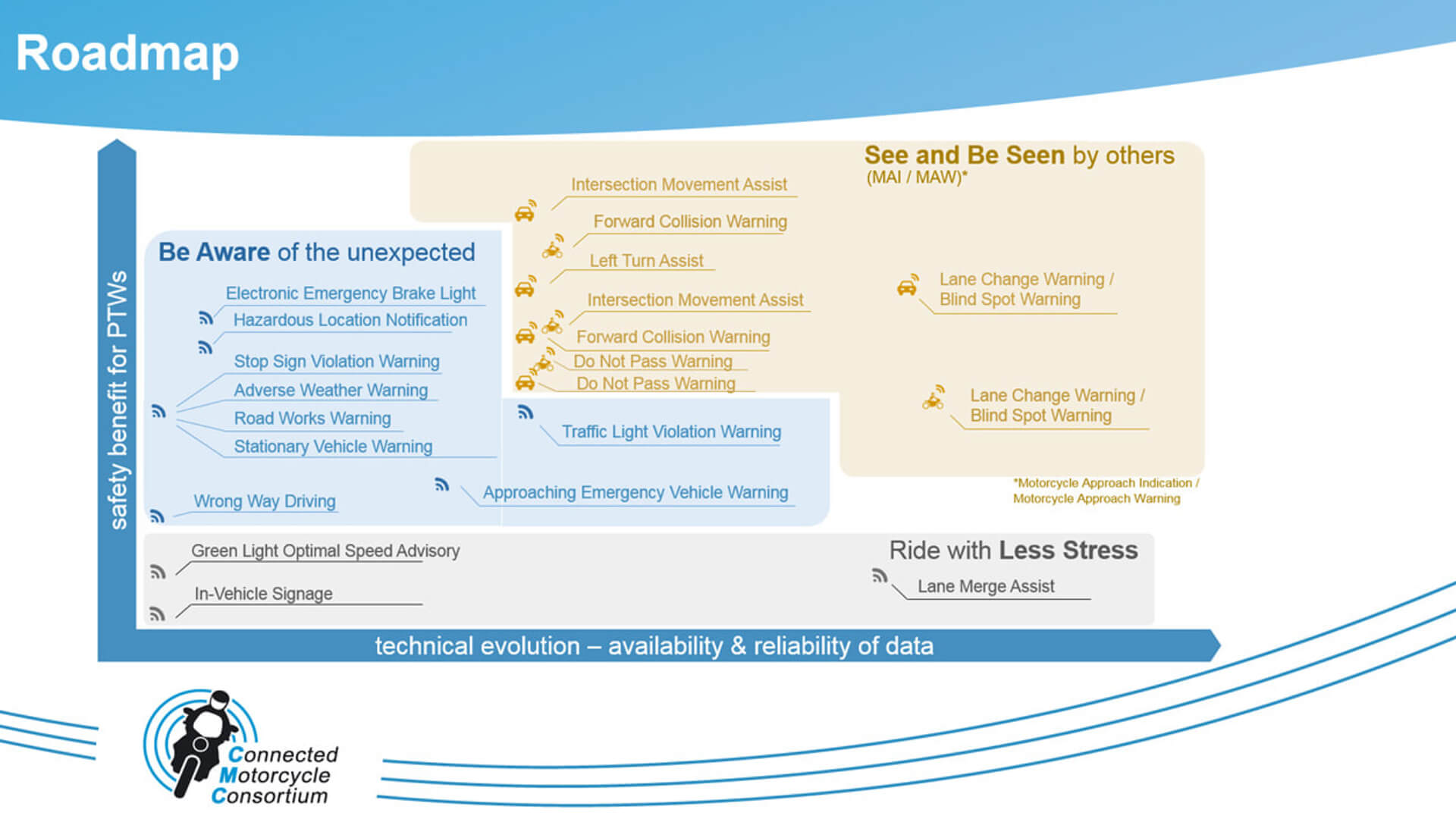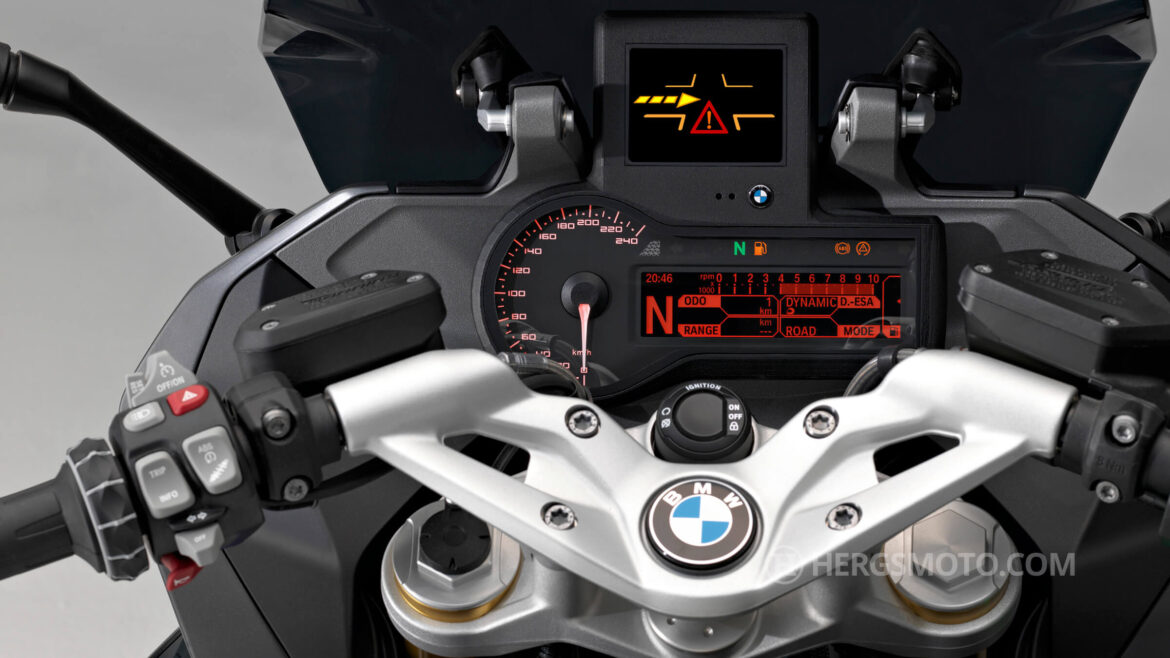For decades, BMW Motorrad has been leading the way with regard to improving motorcycling safety. ABS, Dynamic Traction Control (DTC) or Automatic Cruise Control (ACC) with radar-based distance regulation are just a few examples of the innovative strength of BMW Motorrad when it comes to motorcycle safety.
This topic is the focus of the Connected Motorcycle Consortium (CMC), a cross-manufacturer consortium for motorcycle safety founded in 2016. As a founding member of the CMC, BMW Motorrad will continue to work together with other renowned manufacturers to further increase the safety of motorcycling and to make riding pleasure on two wheels even safer and more attractive.
CMC continues after milestone achievement
Motorcycle manufacturers in CMC signed an agreement in December 2020 to continue cooperation 2021 onwards to further enhance motorcycle safety and assure that motorcycles maintain their role in future mobility. BMW Motorrad, Honda Motor Co., Ltd., KTM AG, Yamaha Motor Co. Ltd, Suzuki Motor Corporation and Triumph Design Ltd. expressed their intention to support the common activity in CMC ‘Next’.
The approach is widened and the work will include investigating conspicuity of motorcycle by ADAS systems (Advanced Driver Assistance System). This ‘system’ approach looks at creating synergies between on-board sensor systems and connectivity.
CMC members consider safety as a goal for the industry and are in favour of a strategy on improving motorcycle rider’s safety.
CMC Basic Specification as milestone
Since its establishment in 2016, CMC has worked on a Basic Specification for motorcycle specific V2X* connectivity systems. CMC has launched this ‘CMC-Basic Specification’ on Dec 11th 2020. The Basic Specification is a first step to describe the function of motorcycle V2X systems. In a further step beyond 2020, the participating manufacturers will define further essential functional requirements to standardise in detail.
CMC-BS documents are available for download on the CMC website: https://www.cmc-info.net.
CMC ‘Next’ increases cooperation with car & other vehicle industries
A further crucial step for CMC ‘Next’ after 2020 is the cooperation with the car industry and other vehicle manufacturers since motorcycles shall communicate in a standardised way. Modern cars are increasingly equipped with on-board sensor systems (radar, camera, etc.) and driver assistance systems. These vehicle systems need to include motorcycle requirements in order to enhance their safety effects in case of mixed traffic with motorcycles.
CMC believes that tailored motorcycle/car scenarios and tests need to be developed and standardised.
The new organisation has started its activity in January 2021. The six motorcycle manufacturers encourage other motorcycle manufactures, suppliers, Car manufactures and the other related organisations to join the cooperation to further pursue the deployment of new elements for motorcycle safety.
As a motorcycle and car manufacturer, the BMW Group has a twofold interest in CMC NEXT’s topics and sees particular opportunities for synergy in this dual role, especially in the area of onboard sensor technology. BMW Motorrad plans to use rider assistance functions to improve motorcycle safety and, as part of CMC NEXT, work towards ensuring that both V2X systems as well as the onboard sensor-based systems of motorbikes and cars work hand in hand and are not used as stand-alone systems.

* V2X in terms of wireless communication technology stands for ‘Vehicle-to-Everything’, including ‘Vehicle-to-Vehicle’ and ‘Vehicle-to-Infrastructure’.
*the term ‘motorcycle’ in this text covers all types of Powered Two Wheelers (PTW)
COPYRIGHT 2021 Connected Motorcycle Consortium.
Credits | Source and images courtesy of BMW AG, Munich (Germany).




